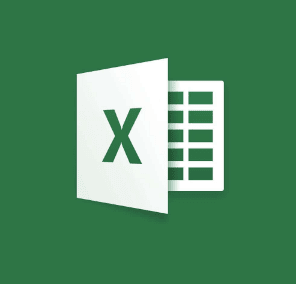Master Microsoft Excel: The Essential Course for Beginners
Microsoft Excel is one of the most powerful tools for data organization, analysis, and visualization.
Why Take This Course?
Boost Productivity: Learn shortcuts and tools that save time and enhance workflow.
Beginner-Friendly: No prior experience needed just a willingness to learn.
Comprehensive Content: Covers all the fundamental features of Microsoft Excel.
Practical Skills: Gain hands-on experience to manage and analyze data efficiently.
Who is the course suitable for?
Perfect for students, or someone looking to enhance their computer skills, this course will guide you through the essentials of Excel.
How does the course work?
There are 8 important topics to complete. You can customize your lessons to suit your needs by picking certain topics of interest. After a lesson students will be able to practice what they have learned on their own. You will be provided with a task to complete on your own to reinforce what you have learned. Your task will be sent via Google Classroom after each lesson.
How do I dedicate a specific topic within my package?
You will be able to designate the hours included in your package to certain topics.
How long is this course?
Depending on the student, the amount of time needed will vary. As your lessons progress, your tutor will guide you on when it is okay to move on to the next topic and will work with you to adjust based on your individual needs and progress.
Before starting the course you will be consulted via a Skype video call so that I can:
1. Learn more about you.
2. Show you how to use/set up Google Classroom.
3. Help you set lessons, dates, times, and achievable goals.
4. Allow you to become more comfortable within the online learning environment.
What do I need to learn online?
Learning online is effective and convenient. It's most likely that you already have:
1. An internet connection with a speed of 10mbps.
2. A computer or laptop.
3. A webcam (preferred, but not necessary).
4. A comfortable spot in your home.
5. An email address.
6. Microsoft Office (Excel).

What You'll Learn in This Course
The Microsoft Excel course covers the core functionalities of the program, ensuring you gain practical knowledge that can be applied immediately. Here’s an overview of what you’ll learn:
1. Getting Started with Excel
Before learning advanced features and tools you'll get familiar with the Excel interface, including cells, rows, columns, and workbooks. Understanding these basics will help you navigate Excel with confidence.
2. Entering & Formatting Data
Learn how to input and organize data using formatting tools. You’ll learn how to adjust cell styles, apply number formats, and use alignment options to present your data effectively.
3. Basic Formulas & Functions
Excel is known for its powerful formulas and functions. This section covers essential calculations such as SUM, AVERAGE, and IF statements, helping you automate calculations and streamline data analysis.
4. Sorting & Filtering Data
Managing large datasets can be overwhelming. You’ll learn how to sort and filter data efficiently, making it easier to find relevant information and analyze trends.
5. Using Tables & Conditional Formatting
Tables help organize large data sets, and conditional formatting allows you to highlight key information based on specific criteria. This section will teach you how to use these tools effectively.
6. Working with Charts & Graphs
Visualizing data makes it easier to interpret. You’ll explore how to create and customize bar graphs, pie charts, and line graphs to present your data.
7. Introduction to PivotTables
PivotTables allow you to summarize and analyze large amounts of data quickly. This section will introduce you to creating and customizing PivotTables for efficient data insights.
8. Saving & Sharing Workbooks
Learn how to save your work in different formats and share Excel files with others. This section also covers best practices for collaboration and data security.

